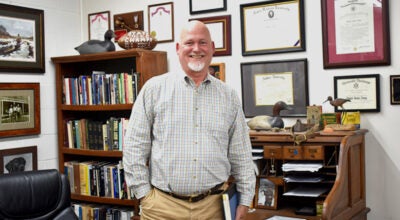Fagan warns against overusing antibiotics
Published 5:41 pm Friday, October 5, 2018
VALLEY — Dr. David Fagan has been making the local civic club speaking circuit lately talking about the dangers of overusing antibiotics. On Wednesday, he was the guest speaker at the noon hour meeting at the Kiwanis Club of Valley.
“Don’t get me wrong, antibiotics are good,” he said. “They have saved countless lives. The big thing is that people shouldn’t take them when they don’t need them.”
Antibiotic use is not wise, Fagan said, when a person has a viral infection such as a bad cold, the flu or a runny nose.
Any time antibiotics are used, they can cause side effects and lead to antibiotic resistance, which is now an urgent threat to public health.
What people need to understand, Fagan said, is that antibiotic resistance does not mean that the body is becoming resistant to to antibiotics; it’s that bacteria are becoming resistant. When this happens, antibiotics cannot fight them and the bacteria can multiply. Some resistant bacteria can be hard to treat and can spread to other people.
According to the Centers for Disease Control, each year in the U.S. an estimated two million people get infected with antibiotic-resistant bacteria and at least 23,000 of them die.
There’s something of a Jekyll and Hyde aspect to modern medicine.
“Since I became a doctor 30 years ago, there have been incredible advances in medicine,” Fagan said. “At one time, when someone had a heart attack they’d be in the hospital for a week and there wasn’t much we could do for them but slowly get them off their feet and get them walking. There’s so much more can be done for them now. People with cancer are living longer than they once did. Cancer is not the death sentence it once was.”
The not-s0-good developments in medicine involve overuse, specifically opioid addiction and the overuse of antibiotics.
Fagan cited the example of a form of bacteria commonly known as e coli. He said that ten years ago antibiotics were 100 percent effective in combatting it. Since that time, the bacteria has become resistant to it, so much so that the effectiveness rate is down to 55 percent.
The problem with antibiotics can be seen in the amount of prescriptions that are being written. Fagan said that in one recent year alone, a total of 266 million prescriptions were written for outpatients in the U.S. That’s five for every six people in the country. Close to one-third of them, he said, were written for conditions that really didn’t need antibiotics.
Fagan said that there’s a need for an antibiotics stewardship program designed to prescribe antibiotics when they are needed but to avoid doing this when not necessary.
When antibiotics aren’t needed, they won’t help you and the side effects can be harmful. They can include rash, dizziness, nausea, diarrhea and yeast infections. A more serious side effect is what’s known as clostridium difficile, or c-dif. “I’ve had three or four cases of c dif in my practice in recent years,” Fagan said.
C-dif can lead to severe colon damage and death.
Fagan said that it’s human nature for doctors to be people pleasing. When some people get something like a cold or sore throat they will go to a doctor and expect to get antibiotics to treat it.
“They can insist on it, and it’s very easy for a doctor to do that,” he said. “It may be better to avoid that.”
A recent change in medicine is that doctors aren’t prescribing cough medicine the way they once did. This may have been a factor in the opioid problem. This is being more closely monitored by health agencies.
“They know in Montgomery how many pills for oxycodone are being prescribed,” he said. “If you write too many, they may ask you about it.”
Four ounces of cough medicine is the equivalent of 120 pills.
“It would be so good if we could treat pain without all the side effects,” Fagan said. “Some people can take prescription medication without getting euphoric, but for other people it seems that their brain is pre-wired for addiction. The problem here is that there is no way to predict this.”





